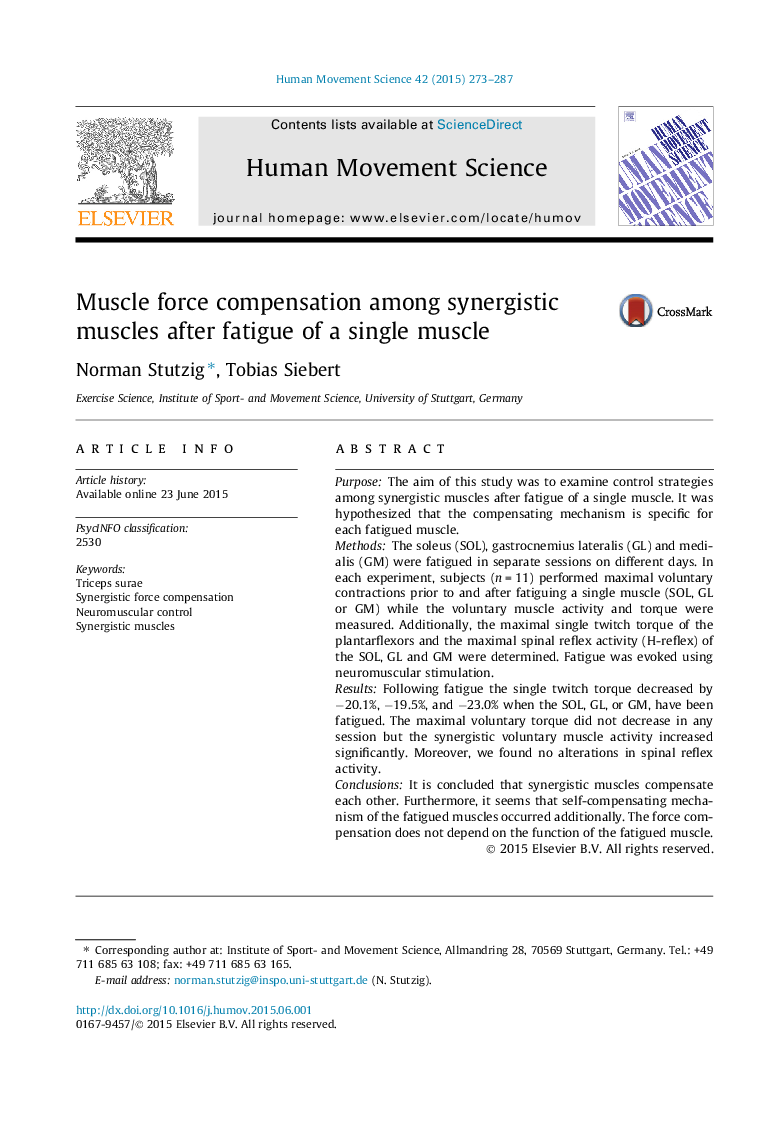| Article ID | Journal | Published Year | Pages | File Type |
|---|---|---|---|---|
| 928247 | Human Movement Science | 2015 | 15 Pages |
•Maximal voluntary torque after fatigue of a single muscle was examined.•In different test-sessions each muscle of the triceps surae was fatigued.•Neuromuscular and mechanical parameters were examined.•Synergistic muscles compensate for a fatigued muscle by increased muscle activity.•The force compensation does not depend on the function of the fatigued muscle.
PurposeThe aim of this study was to examine control strategies among synergistic muscles after fatigue of a single muscle. It was hypothesized that the compensating mechanism is specific for each fatigued muscle.MethodsThe soleus (SOL), gastrocnemius lateralis (GL) and medialis (GM) were fatigued in separate sessions on different days. In each experiment, subjects (n = 11) performed maximal voluntary contractions prior to and after fatiguing a single muscle (SOL, GL or GM) while the voluntary muscle activity and torque were measured. Additionally, the maximal single twitch torque of the plantarflexors and the maximal spinal reflex activity (H-reflex) of the SOL, GL and GM were determined. Fatigue was evoked using neuromuscular stimulation.ResultsFollowing fatigue the single twitch torque decreased by −20.1%, −19.5%, and −23.0% when the SOL, GL, or GM, have been fatigued. The maximal voluntary torque did not decrease in any session but the synergistic voluntary muscle activity increased significantly. Moreover, we found no alterations in spinal reflex activity.ConclusionsIt is concluded that synergistic muscles compensate each other. Furthermore, it seems that self-compensating mechanism of the fatigued muscles occurred additionally. The force compensation does not depend on the function of the fatigued muscle.
